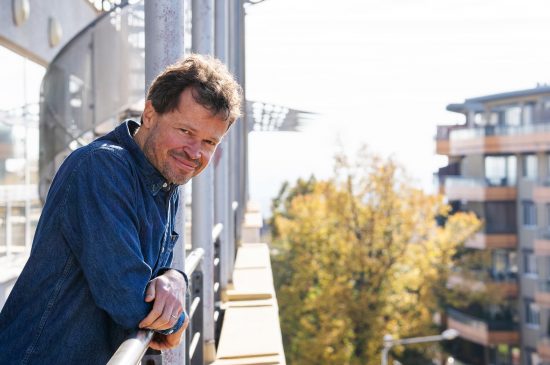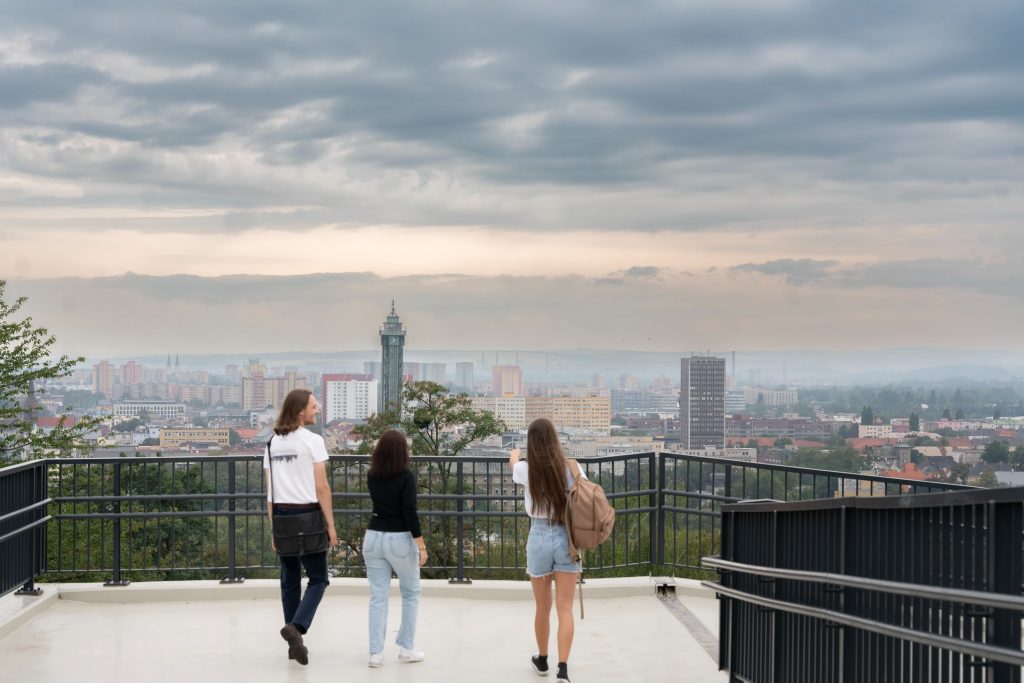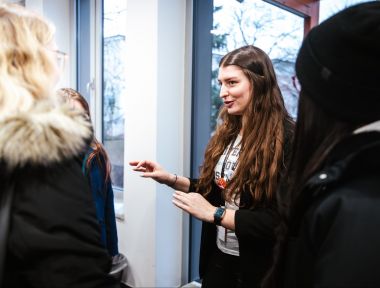The University of Ostrava welcomed the prominent scientist Dr. Marcin Spyra, who joined the research team at the Department of Social Geography and Regional Development at the Faculty of Science. Marcin Spyra focuses on researching sustainable development of urban and peri-urban landscapes as part of the Global Experts program, which is co-funded by the City of Ostrava.

This article is also available in Czech: „Neměli bychom zapomínat, že města jsou domovem i pro ostatní živočichy,“ říká Global Expert Marcin Spyra
Také čtěte
How can an ordinary person imagine a sustainable city and how do we know that we live in one?
A truly sustainable city is one where the social, economic and environmental aspects are in harmony. It’s a place where people are happy to live, feel connected to their community, can pursue their goals, and live in harmony with the environment. This vision of sustainability isn’t just something that city planners or officials decide; it’s about the everyday experiences of ordinary people – how safe they feel, how affordable life is, and how connected they are to the place they call home.
Dr. Marcin Spyra specializes in the management and planning of sustainable development in urban and suburban areas. He deals with how to develop cities and their surroundings in a way that not only improves the quality of life for residents but also preserves the environment and resources for future generations. His work addresses topics such as the efficient use of land, nature conservation in urban areas, the development of public infrastructure, and the creation of green spaces that contribute to a better environment.
What do you have in mind when thinking about sustainability in the city?
I graduated in architecture and urban planning, so I look at sustainability from a perspective of how well people feel between buildings, how safe the spaces between them are, or how friendly they feel. This is what we call placemaking. We are transforming quite anonymous spaces into places which are inclusive and places where people feel well and where they like to spend their time. The places are really going to meet the needs of people and to even enhance positive face to face interactions.
In your opinion, what are the biggest challenges cities face when it comes to sustainable development?
The real challenge in Europe is translating discussions among various stakeholders about urban planning into concrete changes in the city’s strategic documents and actions. Then I would say addressing inequalities. Bridging the gap between impoverished areas and affluent neighborhoods remains a substantial challenge. The issue of new construction is also important – for example populations may be shrinking, yet new buildings continue to be developed, leading to an increasing amount of consumed open space per person. The construction sector is one of the largest contributors to CO₂ emissions.
We are transforming quite anonymous spaces into places which are inclusive and places where people feel well and where they like to spend their time.
You are going to spend three years at the University of Ostrava on your research in the Global Experts program. What is your main topic?
We are beginning this study about open spaces, the transformation of green fields and post-mining and post-industrial areas in cities at different scales. This means not only for the city of Ostrava but also for the broader Moravskoslezsky region. We are identifying various open spaces and we are searching for data which describe them. When we have the data describing the specific type of open spaces, we will be defining some research objectives and research aims too, to see how to characterize those open spaces and to provide some useful information for policy making and planning.
The Global Experts program aims to attract top scientists who have been working abroad for a long time to local universities. It provides researchers with attractive conditions for their work, contributing to the quality and relevance of research at these universities. As a result, new research teams are being formed, which also opens up new opportunities for the professional growth of young scientists.
Does that mean you’re planning to suggest ways to transform some of the spaces into places that society can benefit from?
We tend to transform open spaces to make them useful for us, but sometimes it’s better to leave them covered in greenery for ecological reasons. Humans tend to reshape spaces without clear purposes, like squares or pocket parks, to customize the space to our needs. However, we must remember that cities are home to other species too. Creating an inclusive city for both humans and non-humans might not always require drastic transformations. That is the idea I will be experimenting with in the near future.
What is the motivation behind your research?
We just cannot expand the Earth. Open green spaces, which are not related to buildings or intensive gray infrastructure are not widely available. Cities are expanding rapidly, with more infrastructures being built and urban sprawl becoming common. The demand for open green spaces is rising. This makes it essential to plan these spaces thoughtfully and find the most effective ways to preserve and integrate them into urban environments.
To find solutions for the green-gray trade-off that balance our needs with the need to protect ecosystems, preserve biodiversity, and enhance ecosystem services in balance with sociological perspective on cities is crucial. I hope to steer my research toward achieving a better balance.
Cities are expanding rapidly, with more infrastructures being built and urban sprawl becoming common. The demand for open green spaces is rising.
What inspired you to choose the University of Ostrava for your stay? Overall, how has your experience been so far?
Growing up in Katowice, a post-industrial city in the Upper Silesian region of Poland, I recognized the potential in transforming post-industrial urban landscapes. It provides a valuable opportunity to experiment with different research ideas, as well as explore innovative approaches to planning and governance. The city of Ostrava is offering this nice opportunity to participate also in a transformation process, which I like.
I’ve received a warm welcome and I am meeting more new colleagues as the group grows internationally. We now have colleagues from Germany, India, and other countries. It’s exciting to be part of the department’s internationalization, and I’m happy with the conditions.
Is there anything in your career that you are proud of? Which topics do you enjoy the most?
I’m proud of my journey from architecture and urban planning into the interdisciplinary field I’m in now. It’s been a fascinating path–working beyond academia in consultancy, as an architect, urban planner, and even running my own office for a time. Over the years, I’ve transitioned from focusing purely on architecture to incorporating social geography, physical geography, and even some elements of ecology into my research. This interdisciplinary approach is something I truly enjoy and contribute to academic discussions and future research projects.
What about Ostrava? Has anything about Ostrava pleasantly surprised you, or is it similar to Katowice?
There are similarities due to shared heritage, but also differences. What I enjoy about Ostrava is witnessing its transformation, which truly inspires me. The city seems to be dedicated to improving the daily quality of life for its residents, with things such as a strong public transportation system, or helpful apps to navigate the city. I also appreciate the small urban design interventions, like pocket parks, benches, and lights, especially in areas like Slezská Ostrava.
My favourite example is the footbridge near Ostrava Bazaly Stadium, which not only facilitates movement over busy roads but also creates a pleasant meeting spot. When biking I often see people there in the evening, enjoying the city panorama or even stargazing. It’s a wonderful example of how urban design can foster a sense of place.


 6 min.
6 min. 



